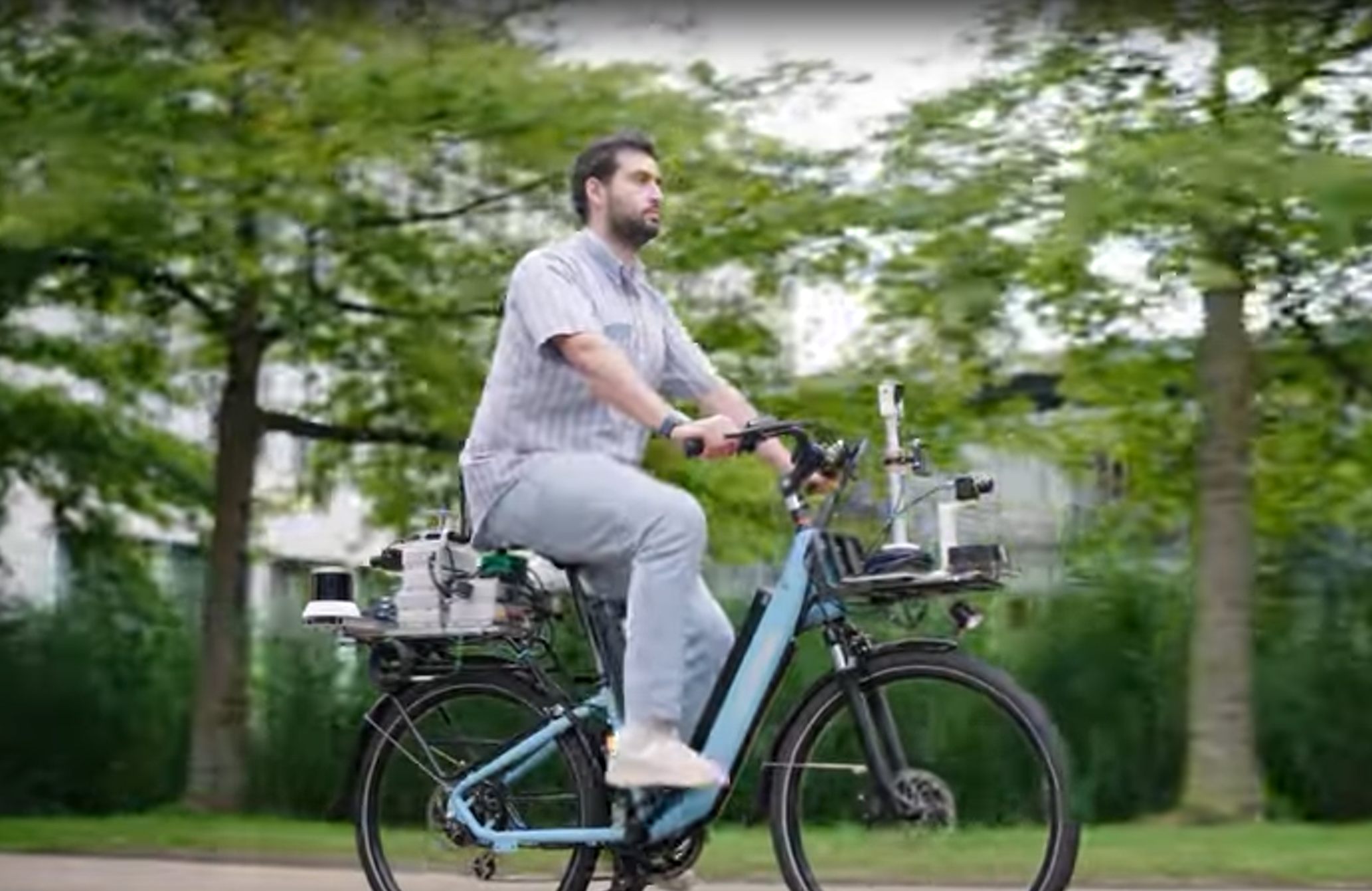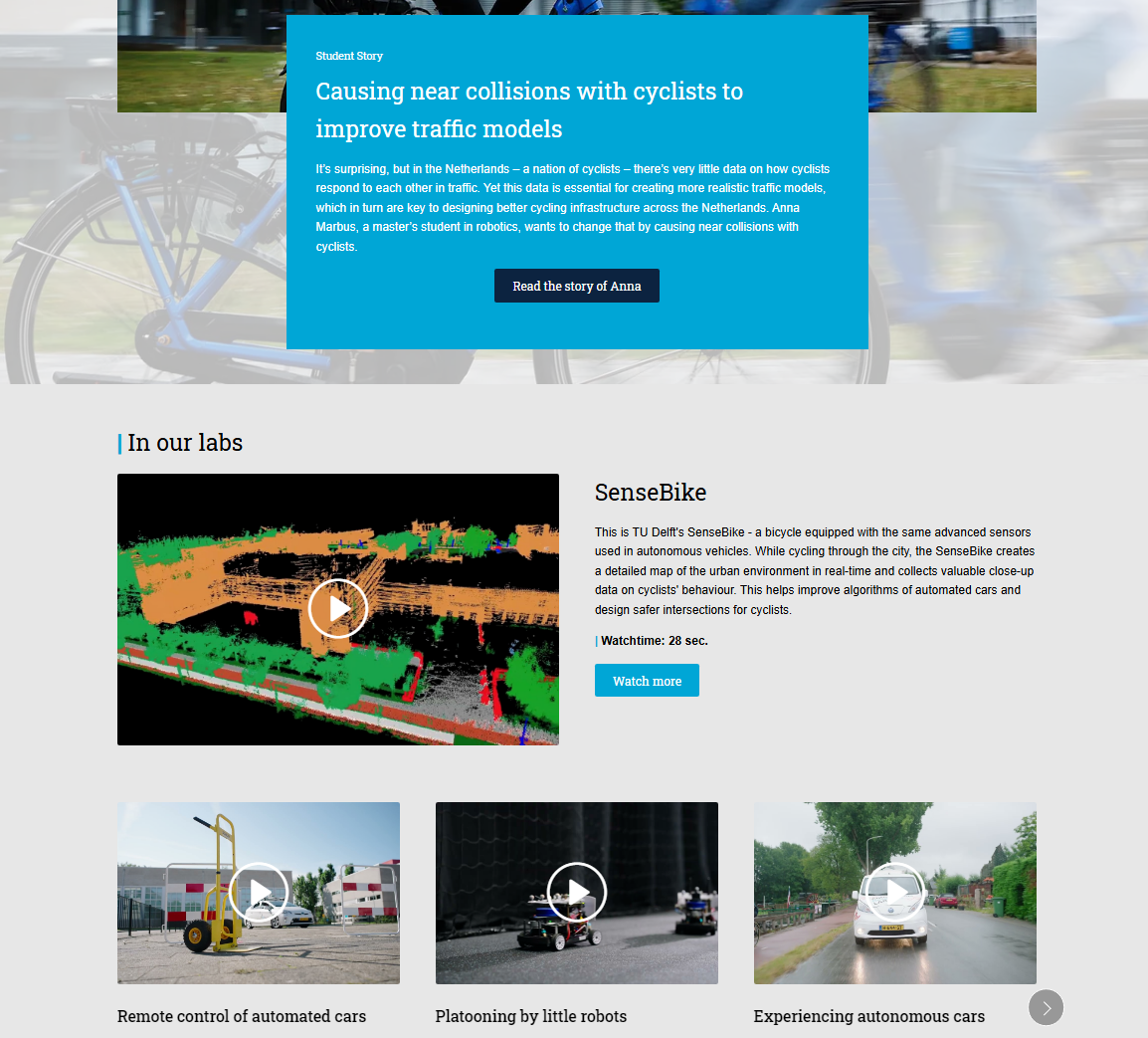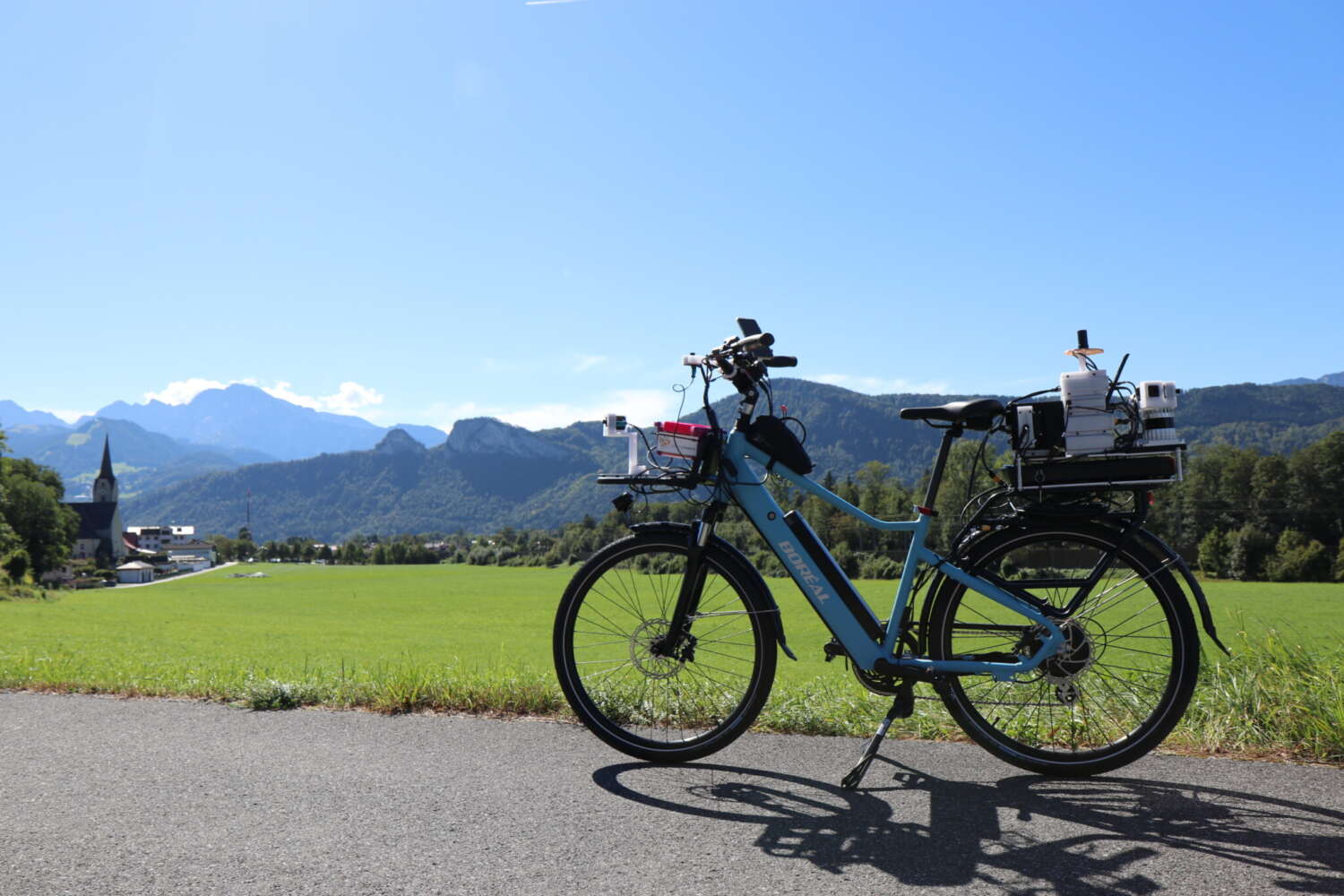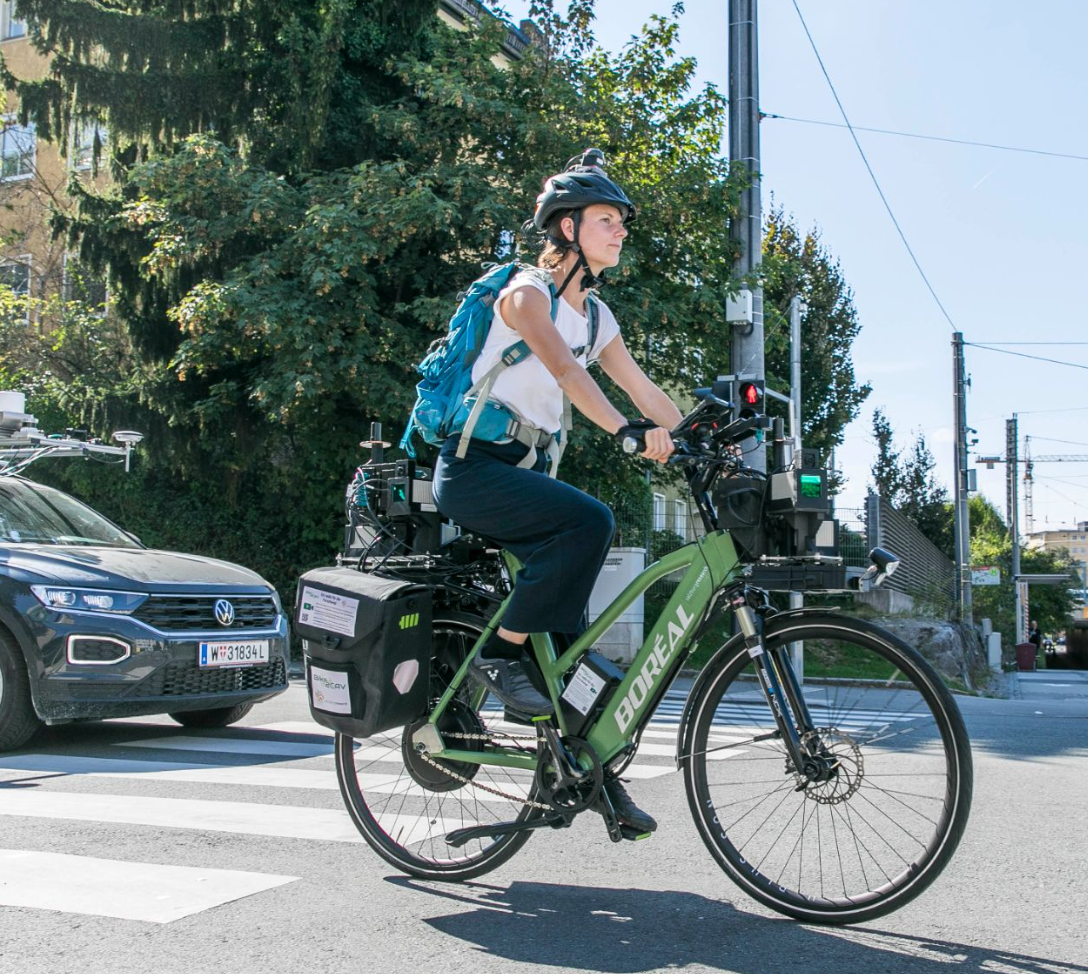Press and Dissemination
How do you demonstrate real-world applications with your cutting-edge innovation while driving public engagement?
The Holoscene E-bike has always enjoyed extensive coverage for every project it’s been involved in—frequently trending in leading publications worldwide and igniting a surge of interest for the institution and teams behind it. Foremost among these academic trailblazers is TU Delft, whose recent dissemination campaign stands as a masterclass in academic outreach. This well-executed strategy not only elevates an institution’s reputation but also attracts critical funding and fosters valuable new partnerships. By spotlighting the Holoscene E-bike and its innovative platform, TU Delft effectively showcases tangible solutions in sustainable urban mobility.
TU Delft: SenseBike

The SenseBike is an innovative e-bike, based on the Holoscene E-bike and its SDV platform, equipped with advanced LiDAR sensors. Further developed by Holger Caesar and his team at TU Delft, it creates real-time 3D maps of urban environments to enhance cyclist safety. TU Delft’s press and dissemination campaign for this project is a masterclass in academic outreach, effectively reaching major publications worldwide.
Photo credit: TU Delft
The Video
A compelling video captures audience attention and succinctly conveys complex innovations. TU Delft’s video exemplifies this by demonstrating how the bike’s advanced sensors create real-time urban maps and collect cyclist behavior data, highlighting its role in enhancing urban mobility.
Video credit: TU Delft
Press Coverage
A successful press campaign effectively communicates a clear message to a target audience, utilizing compelling narratives and strong media relationships to secure coverage in reputable outlets. TU Delft’s SenseBike campaign exemplifies this by highlighting its innovative approach to cyclist safety, resulting in features in major publications such as SCMP, MSN, France24, and Mathrubhumi. This widespread coverage not only enhances the project’s credibility but also raises public awareness about advancements in urban mobility
“
“The data collected by the SenseBike could be used to improve road safety for cyclists and inform the development of autonomous vehicles.”
– South China Morning Post
“The e-bike is equipped with lidar laser detectors to gather data that could help AI teach cars to ‘see’ bicycles and their riders.”
– MSN
The Website
TU Delft’s Urban Mobility website excels in communication by presenting complex research through engaging narratives, clear visuals, and concise summaries. It effectively showcases innovative projects, such as the SenseBike, and highlights their real-world applications, making advanced concepts accessible to a broad audience.
Credit: TU Delft

Salzburg Research: RadBEST
The RadBEST project, led by Salzburg Research, has successfully combined online workshops and strategic media outreach to amplify its impact, securing coverage in leading German-language specialized publications such as Pedelecs und E-bikes, SAZbike, and Der Bund. This approach has not only engaged city planners, researchers, and industry partners but also demonstrated how interdisciplinary collaboration can shape the future of urban mobility. A key example is the Holoscene E-bike, which has played a central role in RadBEST’s research, providing real-world data and insights into sustainable transport .

RadBEST (Radverkehrs-Beschleunigung und Sicherheits-Tool) is a research project led by Salzburg Research, focused on improving cycling infrastructure and safety in urban environments. The project develops data-driven solutions to address challenges such as narrow streets, insufficient overtaking distances, and overall cyclist safety. Through interdisciplinary collaboration with academic institutions, city planners, and industry partners like Boreal Bikes, RadBEST aims to make cycling more efficient, secure, and accessible across the DACH region.
Press Coverage
The RadBEST project has gained strong media coverage across the DACH region. Pedelec & E-Bikes highlighted its innovative solutions for cycling on narrow streets, while SAZbike and Velojournal reported on safety risks, including insufficient overtaking distances. This press attention underscores the urgency of improving cycling infrastructure and reinforces RadBEST’s role in shaping safer, more sustainable urban mobility.
“The RADBEST research project has specifically addressed this issue and developed concrete solutions to close gaps in the cycling network and make cycling safer and more comfortable”
– Pedelecs & E-Bikes
“The safety of cyclists can be improved through various measures. These include core streets or so-called ‘sharrows’.”
– Velojournal
Salzburg Research: BIKE2CAV

The Bike2CAV project, led by Salzburg Research, developed V2X communication methods and non-distracting warning systems to enhance cyclist safety. Field tests in Salzburg validated these cooperative intelligent transport systems, demonstrating their effectiveness in reducing cyclist accidents.
The Video
The video titled “Bike2CAV: Cooperative Intelligent Transport Systems for Cyclists” provides an informative overview of the Bike2CAV project. It demonstrates how V2X communication technology is used to enhance cyclist safety by enabling real-time data exchange between bicycles and vehicles, allowing for early warnings of potential collisions.
Video credit: Salzburg Research
Press Coverage
The Bike2CAV project received significant media attention for its innovative use of V2X communication and AI to enhance cyclist safety.
“The bicycle is equipped with LiDAR laser detectors that collect data to teach AI to ‘see’ bicycles and their riders.”
– Der Standard
“Austrian Bike2CAV V2X project could mark turning point in cyclist safety”
– ITS International
The Website
The Bike2CAV website effectively addresses the challenge of presenting complex research by organizing detailed information into intuitive sections, such as project goals, innovations, and test infrastructures. This clear structure enhances user navigation. The inclusion of visual elements, like images and videos, enriches the content, making it more engaging. This comprehensive approach successfully communicates the project’s mission to enhance cyclist safety through vehicle-to-everything (V2X) communication.
Credit: Salzburg Research

